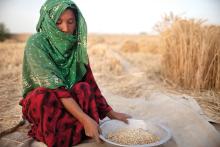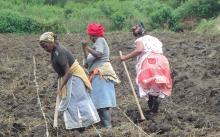Land Library
Welcome to the Land Portal Library. Explore our vast collection of open-access resources (over 74,000) including reports, journal articles, research papers, peer-reviewed publications, legal documents, videos and much more.
/ library resources
Showing items 1 through 9 of 88.Changes in the amount and location of cropland areas may affect the potential crop production at different spatial scales. However, most studies ignore the impacts of cropland displacement on potential crop production.
This study investigates the role of the different institutional actors involved in the development and implementation of land use policies in the Ethiopian Rift Valley.
This paper investigates how large-scale land acquisitions (LSLAs) can be governed to avoid underuse and thereby spare room for other land claims, specifically nature conservation. LSLA underuse occurs when land in LSLAs is not converted to its intended use.
By law, non-governmental organizations (NGOs) in Ethiopia are severely restricted in their activities towards policy development. In this study we explore to what extent these restrictions have affected NGOs in Natural Resource Management in the Oromia regional state of Ethiopia.
Urbanization has been responsible for the loss of cropland worldwide, especially in China. To guarantee national food security, China has implemented a series of policies to protect cropland.
It is widely accepted among economists and policy-makers that secure and well-defined land property rights are integral to poverty alleviation and economic prosperity. But how do legal systems, land tenure and economic development really relate to one another?
Access to land is key to achieving food security, poverty alleviation, social equity and environmental protection. A brief insight in land governance-related principles and policies of the German development assistance.
Following the end of apartheid, South Africa’s government set itself ambitious goals with a planned land reform. However, there have since been barely any changes in the country’s agricultural structure, and the positive impacts that were hoped for on rural livelihoods have hardly materialised.
The year 2016 marks 15 years since the new wave land reforms became operational in Tanzania. Despite its ambitious goals – encouraging land registration and titling, and empowering women and other vulnerable groups – the results are disillusioning.





